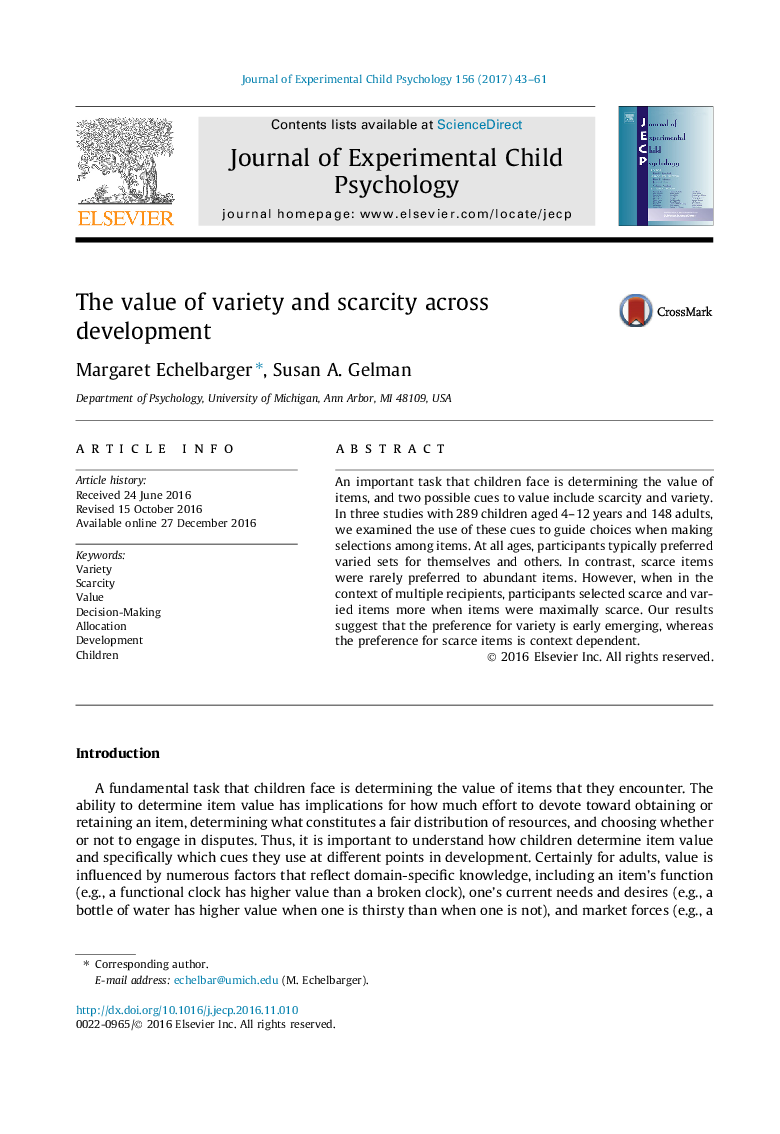| Article ID | Journal | Published Year | Pages | File Type |
|---|---|---|---|---|
| 5040057 | Journal of Experimental Child Psychology | 2017 | 19 Pages |
â¢Scarcity and variety are potential cues for assessing the value of novel items.â¢Children (4-12) and adults made item selections for self and other.â¢Participants consistently selected based on variety but not scarcity.â¢However, participants selected more scarce items for themselves when in a context with multiple recipients.
An important task that children face is determining the value of items, and two possible cues to value include scarcity and variety. In three studies with 289 children aged 4-12Â years and 148 adults, we examined the use of these cues to guide choices when making selections among items. At all ages, participants typically preferred varied sets for themselves and others. In contrast, scarce items were rarely preferred to abundant items. However, when in the context of multiple recipients, participants selected scarce and varied items more when items were maximally scarce. Our results suggest that the preference for variety is early emerging, whereas the preference for scarce items is context dependent.
